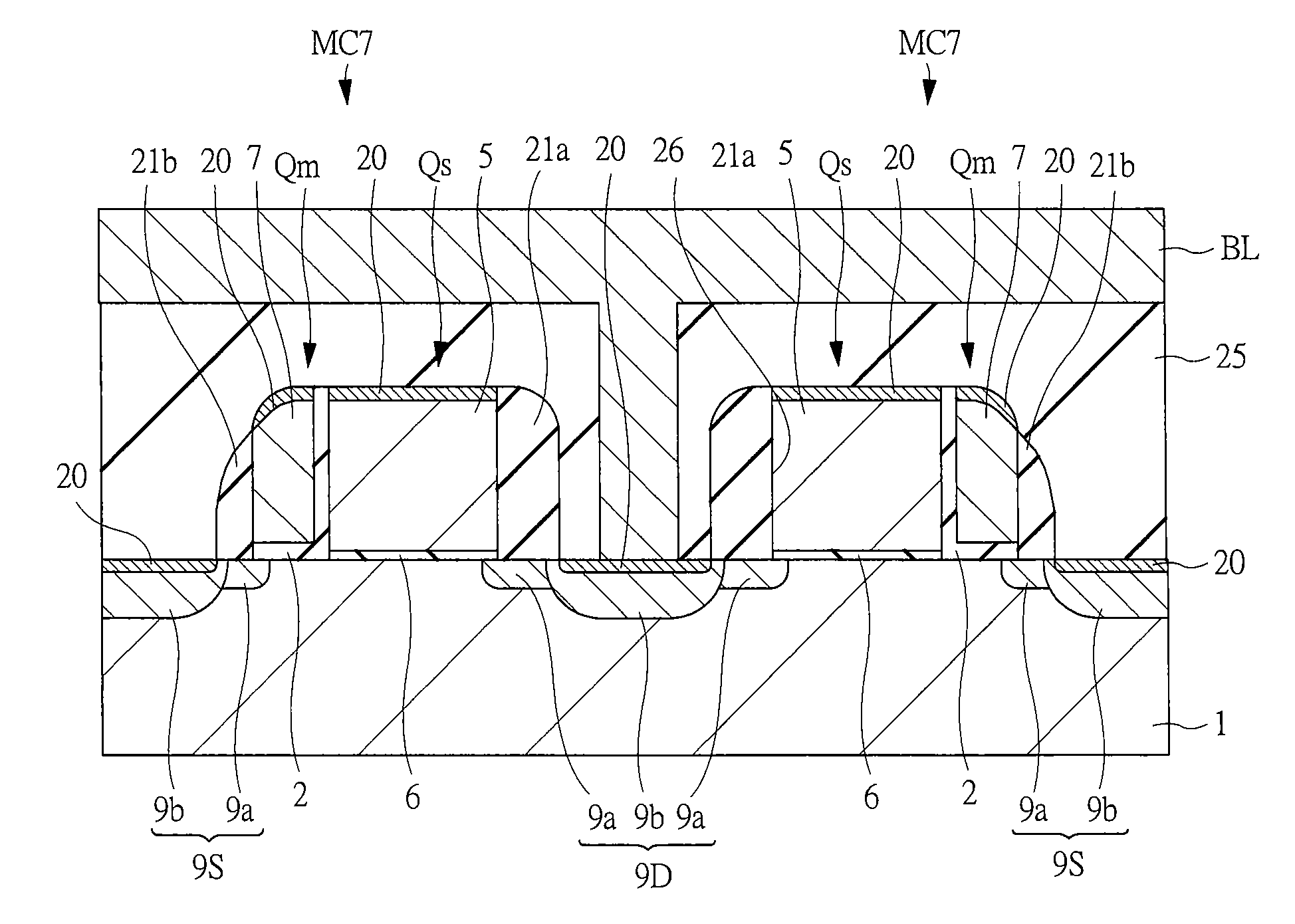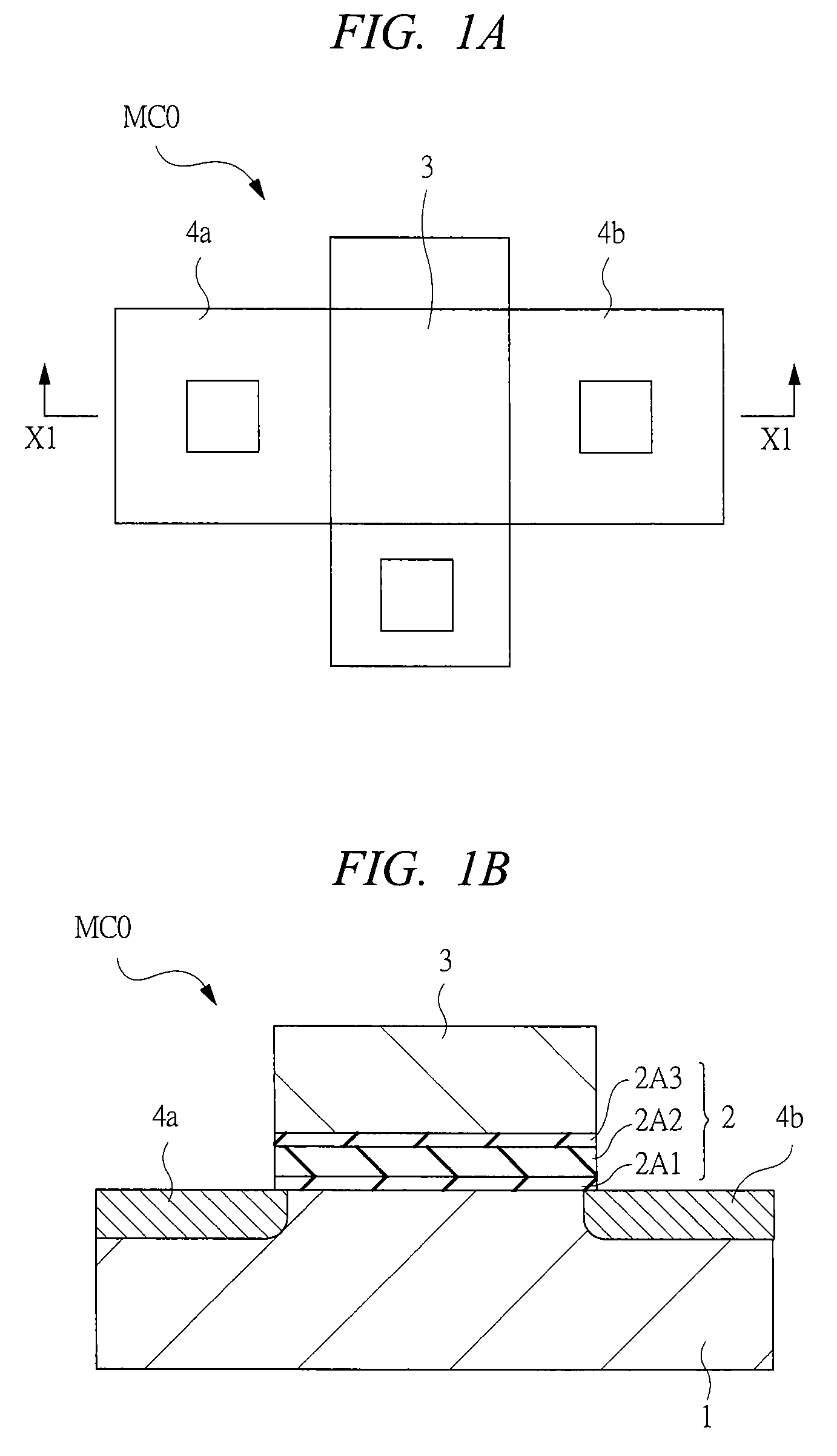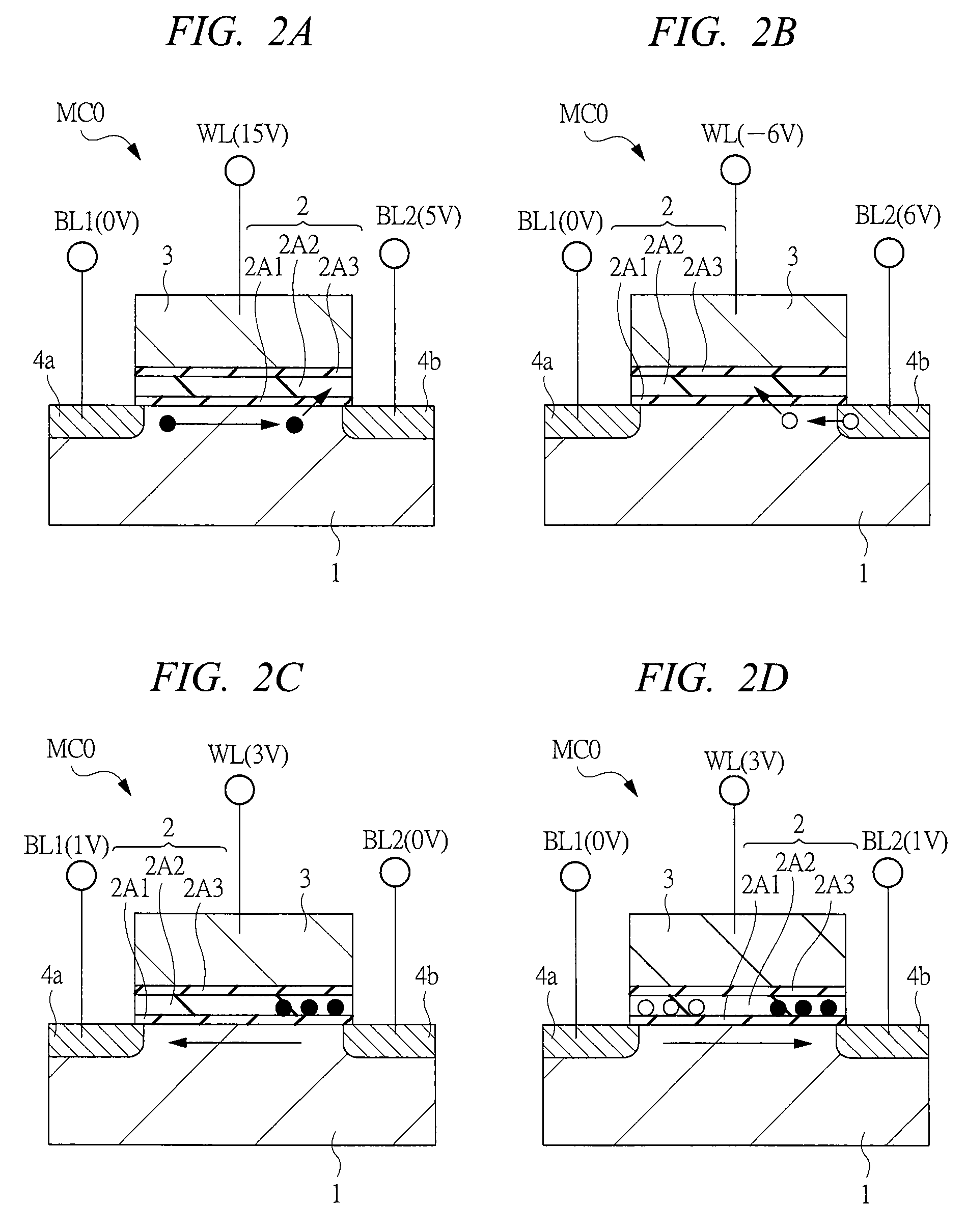Semiconductor device
a technology of semiconductor devices and semiconductors, applied in semiconductor devices, instruments, electrical devices, etc., can solve the problems of difficulty in writing and erasing, and the time required for writing and erasing exceeds the range acceptable for practical us
- Summary
- Abstract
- Description
- Claims
- Application Information
AI Technical Summary
Benefits of technology
Problems solved by technology
Method used
Image
Examples
first embodiment
[0081]The hole injection from the gate electrode side which is the feature of the first embodiment can be understood by the one-dimensional band structure in a direction vertical to the substrate. Therefore, in the first embodiment, the case of using a non-volatile memory cell (hereinafter, simply referred to as memory cell in the embodiments below) having the same device structure as a normal MOSFET (Metal Oxide Field Effect Transistor) whose structure is characteristic will be described as a typical cell structure. Thereafter, the electron injection method will be examined, and the case where it is used for the cell structure suitable for high-speed operation will be described. In these cases, optimal structure can be selected and used in accordance with the use of the memory cell.
[0082]The manufacturing process of a semiconductor device having a non-volatile memory according to the first embodiment will be described below with reference to FIG. 7 to FIG. 10. By this means, the st...
second embodiment
[0105]As is apparent from the first embodiment, it is necessary to suppress the discharge by using an insulator having an energy barrier for the charge-trapping layer (insulator 2B2) in order to maintain the charge-trapping characteristics.
[0106]According to the first embodiment, the insulator 2B1 formed of a silicon oxide film is used for a lower side (substrate side) where the hot-carrier injection of electrons can be achieved. Therefore, good barrier characteristics can be obtained. Accordingly, in the second embodiment, a film structure capable of achieving both the charge-trapping characteristics and hole injection will be considered for an upper side (gate electrode side).
[0107]More specifically, by using a film having a large bandgap for a charge-trapping layer, a large band offset can be obtained. On the other hand, when considering the hole injection, it is required that the energy barrier from the gate electrode is lower than that of a silicon substrate and a silicon oxide...
third embodiment
[0111]The first embodiment has described that the energy barrier can be provided to the charge-trapping layer (insulator 2B2) by forming a silicon nitride film containing oxygen.
[0112]In the third embodiment, the case where a charge-trapping layer of a memory cell is formed of a silicon nitride film having large silicon composition will be described. The silicon nitride film having large silicon composition has a bandgap smaller than that of a (normal) silicon nitride film of stoichiometric composition. The band structure of the gate dielectric 2 in this case is shown in FIG. 15. Also, FIG. 15 shows the flat-band state (state where no bias is applied to the gate dielectric 2 between the gate electrode 3 and the substrate 1, that is, state where electric field of the gate dielectric 2 having no charge is zero or electric field of the channel surface is zero).
[0113]In the memory cell MC4 according to the third embodiment, the insulator 2B5 functioning as a charge-trapping layer is for...
PUM
 Login to View More
Login to View More Abstract
Description
Claims
Application Information
 Login to View More
Login to View More - R&D
- Intellectual Property
- Life Sciences
- Materials
- Tech Scout
- Unparalleled Data Quality
- Higher Quality Content
- 60% Fewer Hallucinations
Browse by: Latest US Patents, China's latest patents, Technical Efficacy Thesaurus, Application Domain, Technology Topic, Popular Technical Reports.
© 2025 PatSnap. All rights reserved.Legal|Privacy policy|Modern Slavery Act Transparency Statement|Sitemap|About US| Contact US: help@patsnap.com



